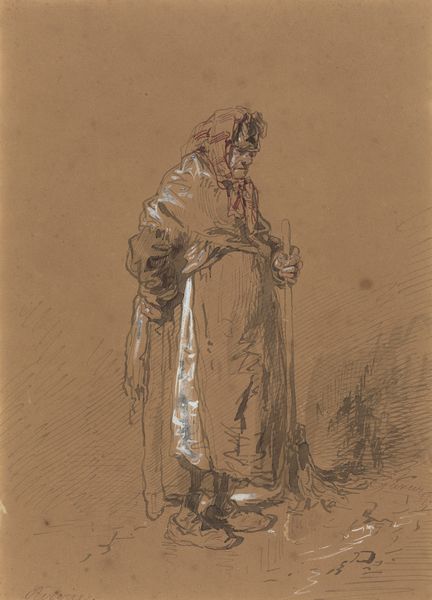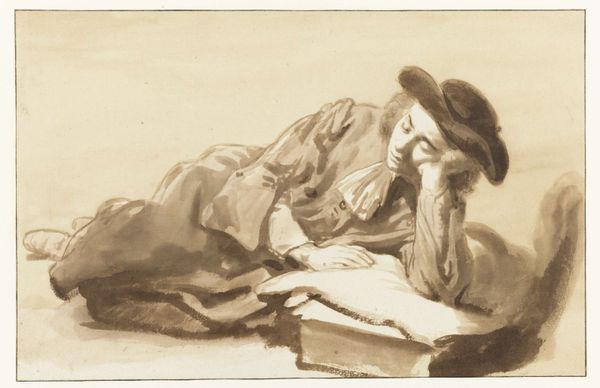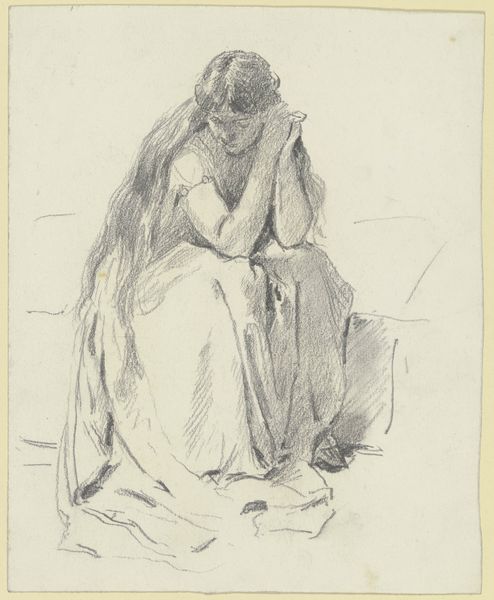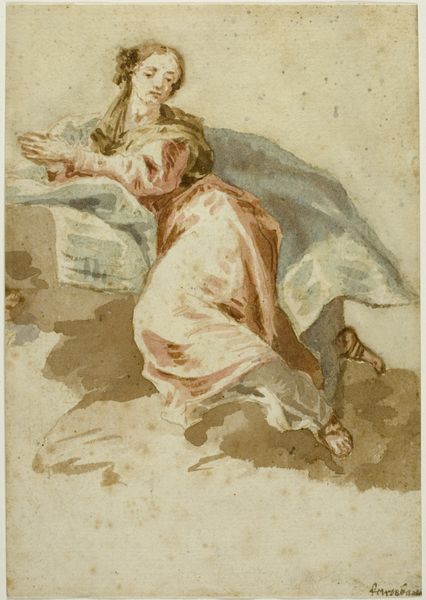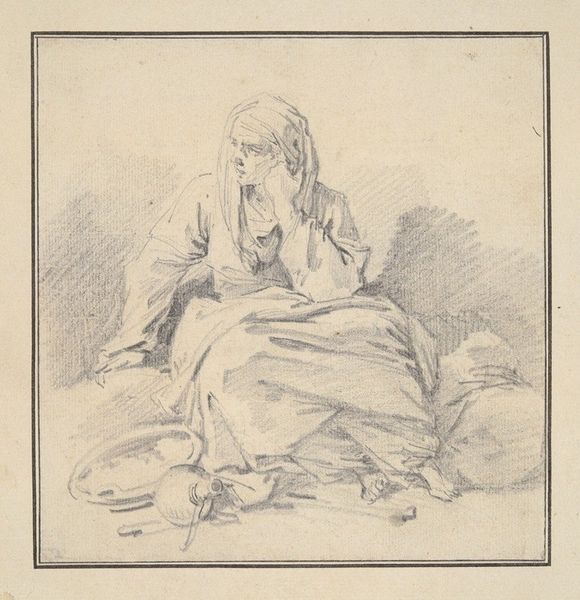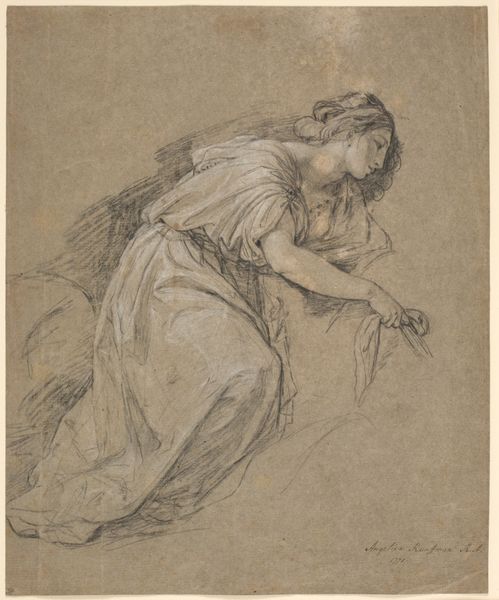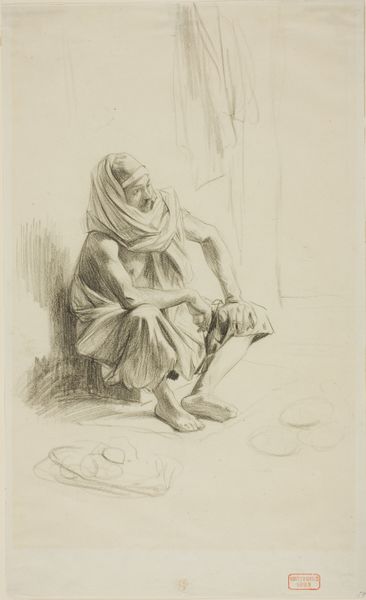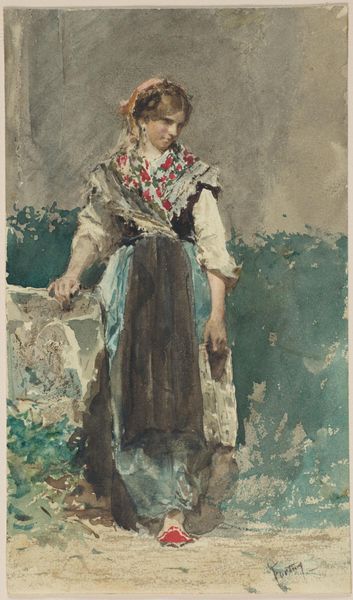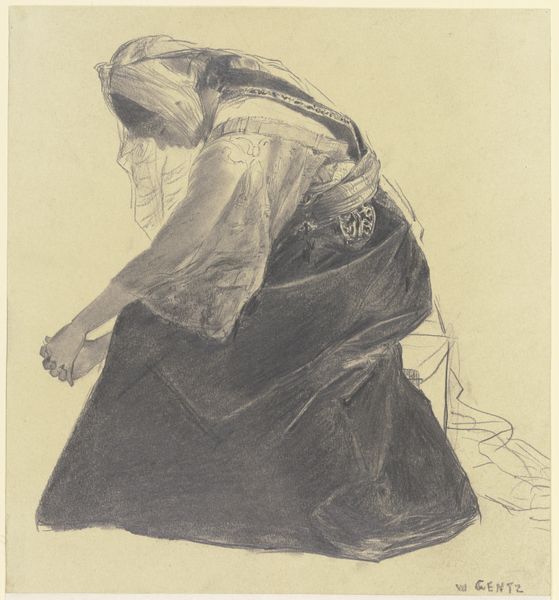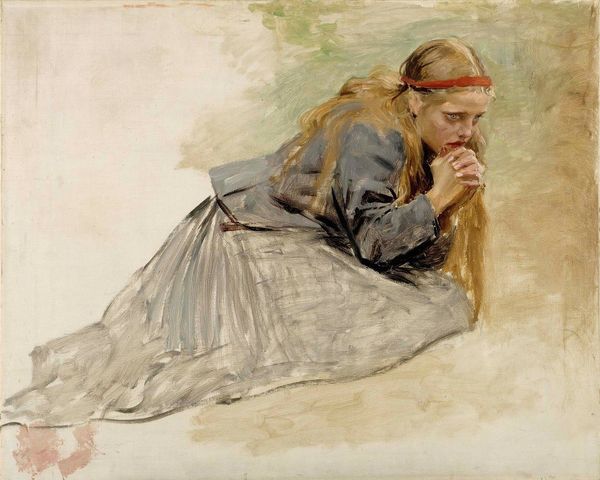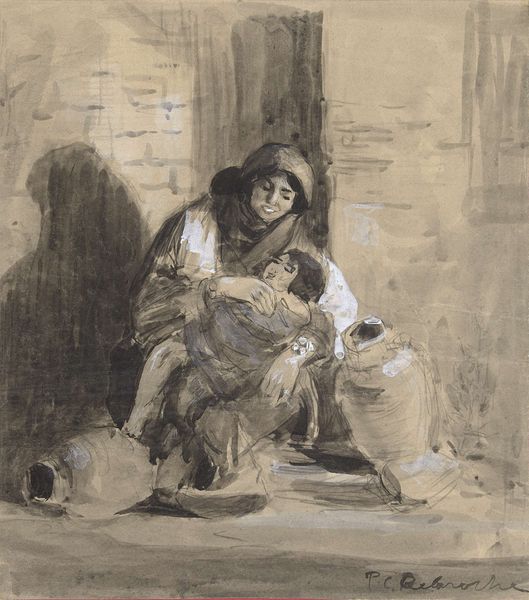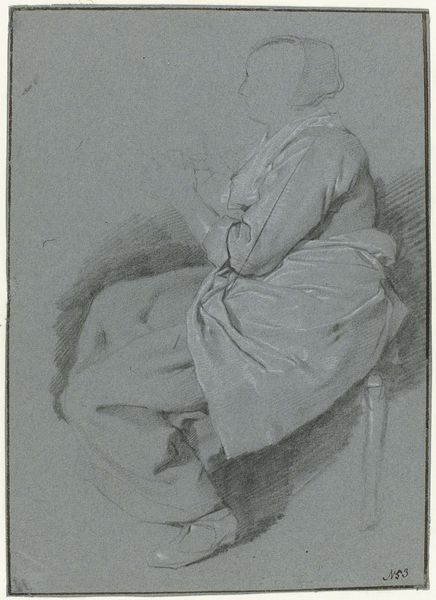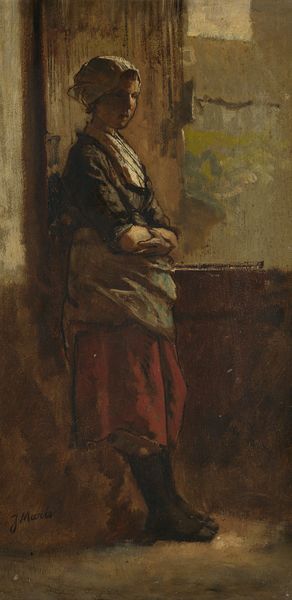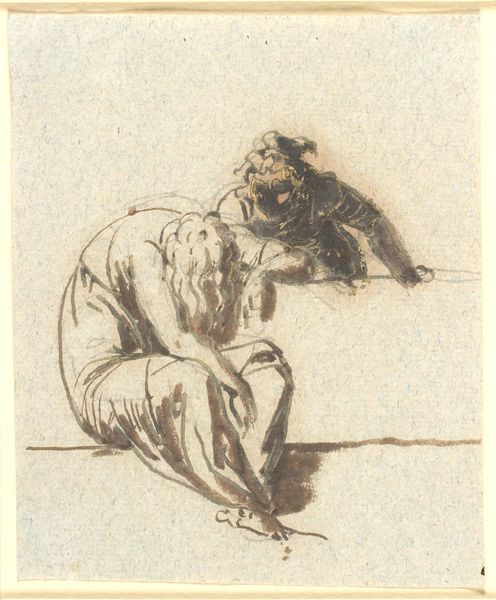
drawing, watercolor
#
portrait
#
drawing
#
charcoal drawing
#
watercolor
#
portrait drawing
#
watercolour illustration
#
genre-painting
#
realism
Dimensions: sheet: 34.4 × 22 cm (13 9/16 × 8 11/16 in.)
Copyright: National Gallery of Art: CC0 1.0
Curator: This is Eleuterio Pagliano’s "A Seated Peasant Girl in Contemplation," created around 1871 using watercolor and charcoal. Editor: It strikes me as melancholic. She seems weighted down by…something. The earthy tones contribute to that somber mood. What can you tell me about it? Curator: Pagliano was operating in a post-Risorgimento Italy grappling with immense social change and disillusionment. Genre paintings like this allowed artists to explore themes of rural life and the working class. This young woman is not idealized; she's shown in a moment of vulnerability. Editor: Her clothing—it's sketched, but we can tell it's simple, functional. I'm drawn to how the watercolor reveals the weave and texture. Was this a common subject, this depiction of rural labor? Curator: Peasant life gained traction as a subject within the broader Realism movement. It reflected a growing interest in representing the everyday experiences of marginalized populations. It certainly invited sentimentality, as seen in literature, theatre, and visual arts throughout Europe. Editor: And there’s that stark contrast: she’s painted delicately, almost intimately, and yet seated on stone, hinting at hard conditions. Her pose is also telling—head in her hand, a classic symbol of pensiveness, maybe even exhaustion. It speaks to the harsh realities of peasant life and the emotional toll of manual labor. Curator: Exactly. And within the framework of newly unified Italy, artists had a growing burden of producing national ideals or archetypes. How might the peasant be the root of Italian national identity, in some sense? Pagliano isn't simply painting a portrait, but offering a window into a social and political moment. Editor: Right. This wasn't simply capturing a likeness; it was loaded with societal implications about labour, gender, and national identity. It makes me wonder, who was the intended audience for this type of work? The urban elite, maybe, trying to reconcile the romantic idea of the countryside with the realities of it? Curator: Precisely. It provided a touchstone, a safe way to reflect on those difficult truths. Editor: It certainly gives us a lot to contemplate. A very delicate drawing. Curator: Indeed. A window into the complexities of Italian identity and rural life in the 19th century.
Comments
No comments
Be the first to comment and join the conversation on the ultimate creative platform.
